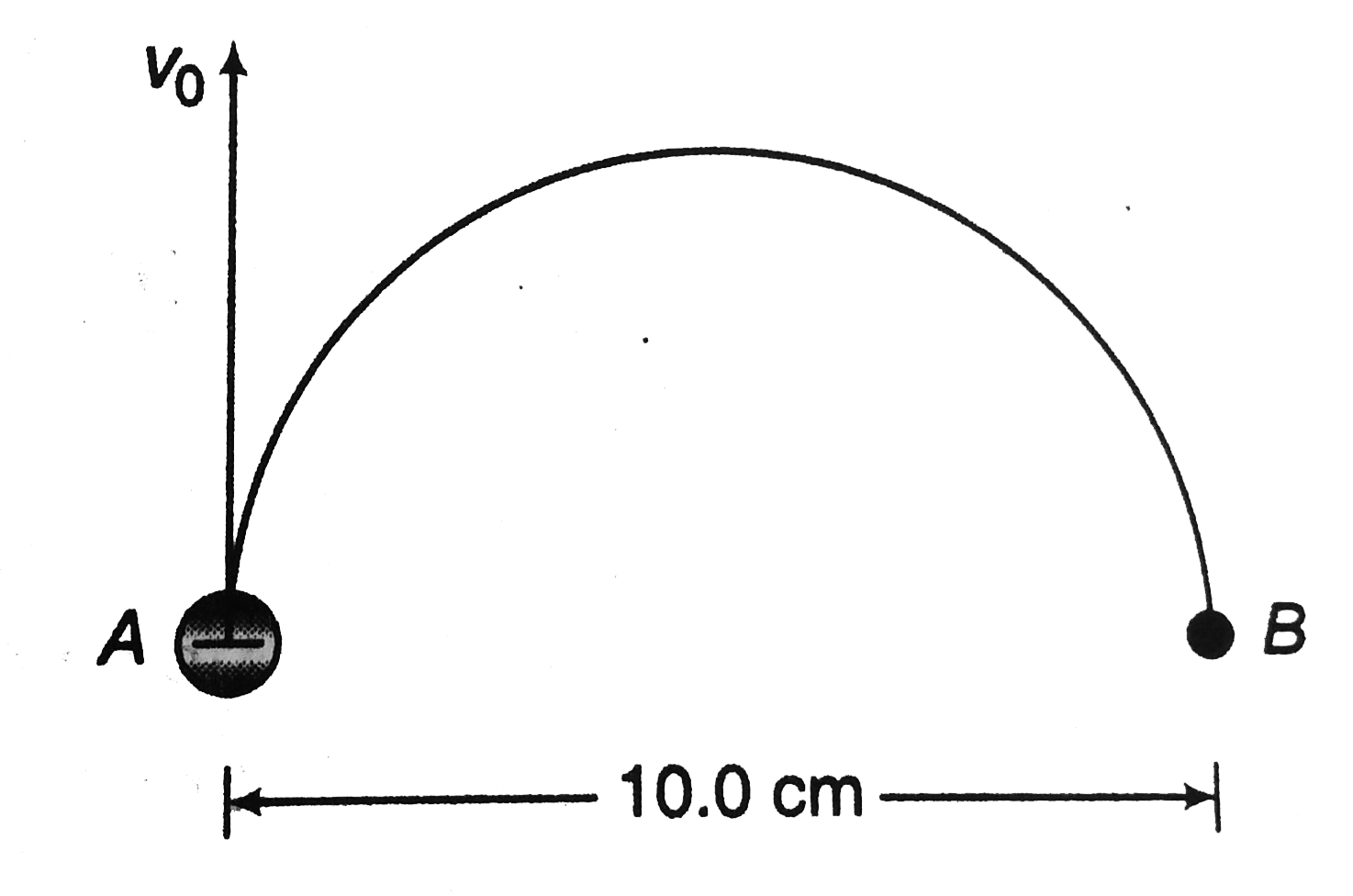The electrons in a particle beam each have a kinetic energy of 1.6×10−17J. What are the magnitude and direction of the electric field that stops these electrons in a distance of 10.0cm
103 v/m in the direction of velocity of electrons
103 v/m positive direction of velocity of electrons
103v/m perpendicular to velocity of electrons
106v/m perpendicular to velocity of electrons
The correct Answer is:A
To solve the problem, we need to determine the magnitude and direction of the electric field that stops the electrons in a distance of 10.0 cm, given that their kinetic energy is 1.6×10−17J.
Step 1: Understand the given information
- The kinetic energy (KE) of the electrons is given as:
KE=1.6×10−17J
- The distance (d) over which the electrons are stopped is:
d=10.0cm=0.1m
- The charge of an electron (q) is:
q=−1.6×10−19C
Step 2: Set up the work-energy principle
- The work done (W) by the electric field on the electrons is equal to the change in kinetic energy. Since the electrons are stopped, their final kinetic energy is 0:
W=KEfinal−KEinitial=0−1.6×10−17=−1.6×10−17J
Step 3: Relate work done to electric field
- The work done by the electric field can also be expressed as:
W=F⋅d=q⋅E⋅d⋅cos(θ)
Here, F is the force, E is the electric field, and θ is the angle between the force and the displacement. For this case, we can assume θ=0 degrees (force and displacement are in the same direction), so cos(0)=1:
W=q⋅E⋅d
Step 4: Substitute the known values
- Since the charge of the electron is negative, we can write:
−1.6×10−17=(−1.6×10−19)⋅E⋅0.1
Step 5: Solve for the electric field (E)
- Rearranging the equation gives:
E=−1.6×10−17−1.6×10−19⋅0.1
- Simplifying this:
E=1.6×10−171.6×10−20=1.61.6×103=103N/C
Step 6: Determine the direction of the electric field
- Since the electrons are negatively charged, they will experience a force in the direction opposite to the electric field. Therefore, the electric field must be directed opposite to the motion of the electrons to stop them.
Final Answer:
- Magnitude of the electric field: E=103N/C
- Direction of the electric field: Opposite to the direction of motion of the electrons.
- The kinetic energy (KE) of the electrons is given as:
KE=1.6×10−17J
- The distance (d) over which the electrons are stopped is:
d=10.0cm=0.1m
- The charge of an electron (q) is:
q=−1.6×10−19C
- The work done (W) by the electric field on the electrons is equal to the change in kinetic energy. Since the electrons are stopped, their final kinetic energy is 0:
W=KEfinal−KEinitial=0−1.6×10−17=−1.6×10−17J
- The work done by the electric field can also be expressed as:
W=F⋅d=q⋅E⋅d⋅cos(θ)
Here, F is the force, E is the electric field, and θ is the angle between the force and the displacement. For this case, we can assume θ=0 degrees (force and displacement are in the same direction), so cos(0)=1:
W=q⋅E⋅d
- Since the charge of the electron is negative, we can write:
−1.6×10−17=(−1.6×10−19)⋅E⋅0.1
- Rearranging the equation gives:
E=−1.6×10−17−1.6×10−19⋅0.1
- Simplifying this:
E=1.6×10−171.6×10−20=1.61.6×103=103N/C
- Since the electrons are negatively charged, they will experience a force in the direction opposite to the electric field. Therefore, the electric field must be directed opposite to the motion of the electrons to stop them.
- Magnitude of the electric field: E=103N/C
- Direction of the electric field: Opposite to the direction of motion of the electrons.
Topper's Solved these Questions
- ELECTRIC CHARGES AND FIELDSBook:AAKASH SERIESChapter:ELECTRIC CHARGES AND FIELDSExercise:Exercise-II
Explore 56 Videos
- DUAL NATURE OF RADIATION AND MATTERBook:AAKASH SERIESChapter:DUAL NATURE OF RADIATION AND MATTERExercise:PRACTICE EXERCISEX
Explore 42 Videos
- ELECTRIC FIELD AND POTENTIALBook:AAKASH SERIESChapter:ELECTRIC FIELD AND POTENTIALExercise:PROBLEMS (LEVEL-II)
Explore 26 Videos
Similar Questions
If an electron in a hydrogen atom is moving with a kinetic energy of 5.45×10−19 j then what will be the energy level for this electron ?
View SolutionAn electron is moving with a kinetic energy of 4.55×10−25J. Calculate its de-Broglie wavelength.
View SolutionAn electron at point A in figure has a speed v0=1.41×106ms. Find

(a) the magnitude and direction of the magnetic field that will cause the electron to follow the semicircular path from A to B,
(b) the time required for the electron to move from A to B.
View SolutionThe electric force experienced by a charge of 1.0xx10^(-6) C is 1.5 xx 10^(-3) N . Find the magnitude of the electric field at the position of the chaerge.
View SolutionCalculate the magnitude and direction of the electric field at a point P which is 30 cm to the right of a point charge Q=−3.0×10−6C
View SolutionA water particle of mass 10.0 mg and having a charge of 1.50×10−6C stays suspended in a room. What is the magnitude of electric field in the room ? What is its direction?
View SolutionAn electron is moving vertically upwards in the uniform magnetic field of the earth. The velocity of the electron is 2.0×106 m/s and the horizontal component of the earth.s magnetic field is 0.32×10−4T. Obtain the magnitude and direction of the force on the electron.
View SolutionThe Speed of an electron having a wavelength of 1.0 cm is
View SolutionTwo charged particles are placed at a distance 1.0 cm apart. What is the minimum possible magnitude of the electric force acting o each charge?
View SolutionTwo charged particles are placed at a distance 1.0 cm apart. What is the minimum possible magnitude of the electric force acting o each charge?
View Solution
